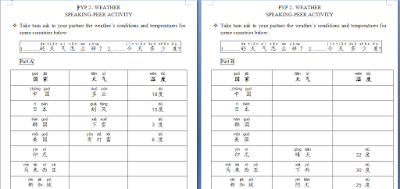Ages: 8-9 years old
Objectives:
- Knew how the traditional Chinese house ("四 合 院”) looked like.
- Practiced critical thinking with two thinking tools.
Learning activities:
I shared a picture of "四 合 院” the traditional Chinese house to grab student’s attention.
Then, I allowed them to observe the picture for about 1-2 minute. Later, I distributed one sheet of sticky note for everyone, in which they could list down any interesting things that they saw from it. Once they finished writing, they posted their papers on the white board. When students sat back, I would ask some volunteers to share their thoughts.
Pair activity: Still used the same picture, I posted two questions,
such as: 这 是什 么 地 方? 谁 住 在 这 里? I hoped by posting these
questions, this provocation will allow them to practice their thinking skills
to think deeper about the function of the building. Students answered these
questions through “Think-Pair-Share” activity.
The “Think-Pair-Share” was a useful tool to facilitate
students to work together with pairs to solve problems. Even, the quiet,
passive students could be very engaged with this activity.
Classroom discussion: Some pairs shared their thoughts and I listed down some common ideas on the whiteboard.
Digging deeper:
- I introduced them the name of the building “"四 合 院” and played two videos from YouTube as the references:
3D: https://www.youtube.com/watch?v=kGNoYG91fww
中国文化: https://www.youtube.com/watch?v=qj5PB755Too
Each group wrote their thoughts in a chart in a big paper.
- Gallery walks. Each group chose two people as the presenters and let another
two members to walk around to listen to other group’s presentation. After about
5 minutes, then they swapped their roles.

















